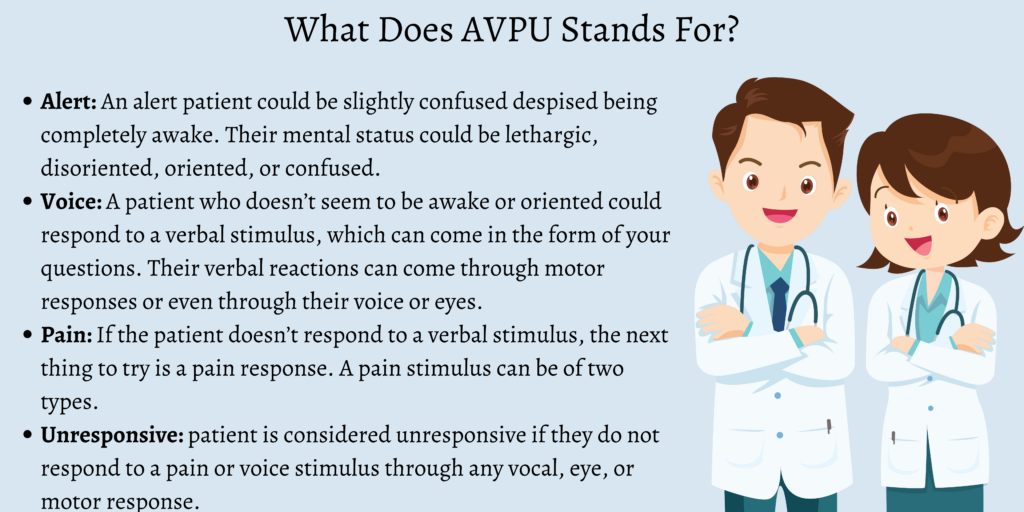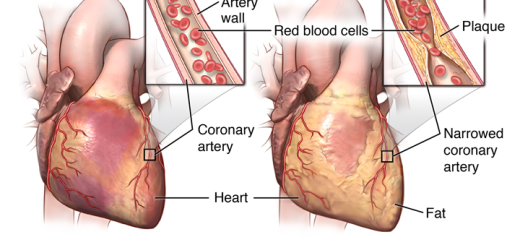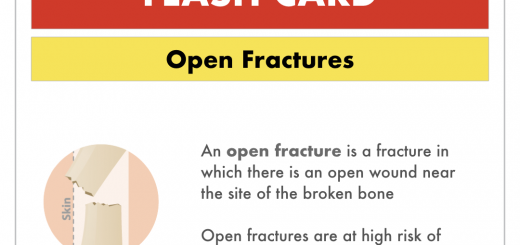A guide to AVPU for first aiders
Being able to assess a patient’s level of consciousness is an important skill for any first aider. A wide range of injuries and medical conditions can affect the consciousness levels and first aiders should be able to recognize deterioration or improvement in patients
There are various scales used to record a patient’s level of consciousness. One of the most detailed is the Glasgow Coma Scale which is used worldwide. The GCS is a reasonably complicated system, which unless you use regularly can be difficult to remember and apply correctly.
AVPU is a simplified version of the Glasgow Coma Scale which is easy to remember and apply to patients. It consists of four possible stages. When recording AVPU it is important to document the time the observation was taken and to track any changes over time as this will help medical staff.

Alert
An alert patient could be slightly confused despised being completely awake. Their mental status could be lethargic, disoriented, oriented, or confused.
First aiders can evaluate the orientation state of a patient by asking them simple questions. These questions can be about what day it is, what time it is, what their name is, and if they know where they currently are.
Make sure to not ask any yes or no questions when testing the alertness of a patient. They can be considered alert if they are completely awake and are spontaneously opening their eyes, responding to voice and environmental stimuli, and seem to be oriented either completely or to a certain degree.
Voice
A patient who doesn’t seem to be awake or oriented could respond to a verbal stimulus, which can come in the form of your questions. Their verbal reactions can come through motor responses or even through their voice or eyes.
When you ask them a question to test how alert they are, they could open their eyes, mumble or grunt, or even move a limb slightly.
The questions to ask in this scenario include if they are okay, if they can hear you, or if they can tell you what happened. Jot down these answers as they will be an indication of the patient’s orientation.
A patient cannot be considered as verbally stimulated if they are alert, can take a decision where they refuse medical care, can describe their primary issue, or can answer sample history questions.
They can be categorized as verbally stimulated if they can respond in a normal tone, display verbal orientation to a loud or normal voice, aren’t fully awake and only react to a verbal stimulus, or have appropriate or even inappropriate answers to your questions.
Pain
If the patient doesn’t respond to a verbal stimulus, the next thing to try is a pain response. A pain stimulus can be of two types.
The first kind is known as a peripheral pain stimulus wherein a first aider can put pressure on the patient’s hand, pinch their ear, or apply pressure on their shoulders.
The second type is called a central pain stimulus which includes a sternal rub, which is something utilized by an EMT and paramedic. This entails rubbing a patient’s sternum with a closed fist or your knuckles.
A patient can be considered as pain responsive if they react only to a pain stimulus, move their eyes or make a sound due to the pain, withdraw due to pain or moan because of it, or respond through a voluntary or involuntary flexion.
Unresponsive
Also known as the ‘unconscious’ state, a patient is considered unresponsive if they do not respond to a pain or voice stimulus through any vocal, eye, or motor response.
At this point, it is necessary to determine if the patient is totally unresponsive or if they are responding to a stimulus while being unconscious.
Conclusion
By resorting to the AVPU scale in first aid, one can detect how a patient’s mental status has been altered. The investigation enables you to notice the symptoms, after which an EMT can determine how to proceed with the necessary treatment.





